Your local planning authority or architect may be requesting a bat activity survey prior to a planning application being approved. If there is the reasonable likelihood any planned works such as building alterations or maintenance work, re-roofing, timber treatment, rewiring or plumbing in roofs could disturb bats or their roosts, then you may have to carry out a bat survey to satisfy the planning authority that your application will not affect bats. Bats are protected all year round whether they are present in the roost or not.

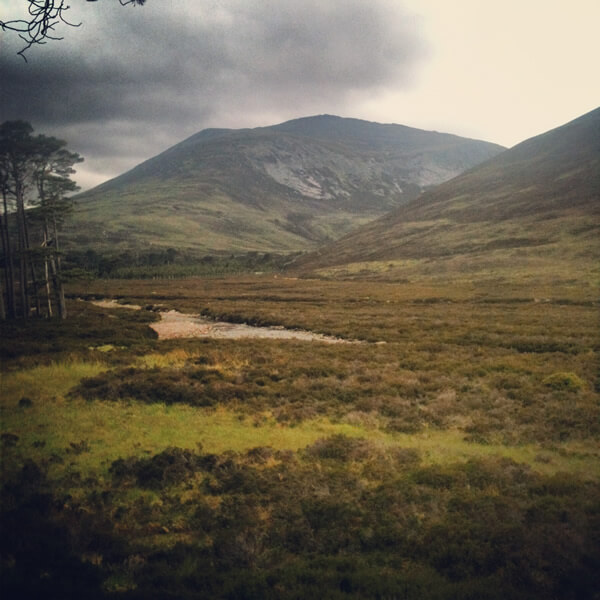
Some animals have special protection from disturbance and damage, and protection of their breeding and resting sites.
The presence, or potential presence, of any protected species is a material consideration in planning application decisions.
This means that Scottish Planning Policy requires that the presence (or potential presence) of legally protected species is factored into the planning and design of development proposals, and that any potential impacts on protected species are fully considered prior to the determination of planning applications.
The aim with all protected species is to follow the mitigation hierarchy: avoid impacts, minimise impacts and then lastly compensate for impacts, restore or offset (as a last resort).
How We Can help
We have over 40 years’ combined experience of carrying out protected species surveys in Scotland. This means we have a strong understanding of the legal framework, along with national and local policies. We know the types of surveys that you need and when you need to do them, helping avoid potential delays to your project.
We provide a comprehensive ecological service ranging from simple surveys to detailed impact assessments. Below is a sample of the range of protected species surveys we offer.
We’d love to hear about your project. Contact us today for more information on how we can support your project needs!

Bats are a European Protected Species, also protected under UK law. If your development could potentially affect roosting, hibernating or foraging bats, then you will be asked for a bat survey to support your planning application.
Stage 1 – Preliminary Roost Assessment
The first stage of a bat survey is to determine the suitability of your survey site to support bats following best practice methodology. During this initial survey all structures are inspected closely (inside and out) and any trees are inspected externally from the ground. Additionally, the habitats within the site and adjacent are evaluated for their suitability to support foraging or commuting bats.
The survey involves the use of a range of equipment such as ladders, torches and an endoscope where necessary to identify any features that may be suitable for bats to roost and if any field signs (or any bats) are present. We have multiple licensed surveyors on our team with extensive survey experience.
This survey provides valuable information to determine if further surveys are required.
Contact us today to discuss your project needs!
Stage 2 – Further Surveys
Bat Activity Surveys (BAS)
Your site has suitability for roosting bats, what’s next?
The next stage is an activity survey. This may consist of one or more emergence surveys, (also called dusk surveys) carried out at dusk (30 minutes before dusk until around 60 minutes or so after) to identify the presence or absence of roosting bats.
It might also consist of a dawn re-entry survey (90 minutes before dawn). During this survey distinctive bat behaviour such as swarming is looked for.
Both survey types require surveyors to be in fixed positions around the structure so that every aspect can be observed and detectors are used to listen for bats echolocating (they record too so we can double check when back in the office). In addition, our surveyors often use infrared or thermal imaging cameras in addition to hand-held bat detectors.
Depending on the suitability of your structure(s), your activity survey should consist of one to three surveys between May and August, with at least two weeks between surveys.
Hibernation Surveys
During the winter months’ emergence and re-entry surveys cannot be carried out as this is considered to be a sub-optimal survey period as bats may be inactive or hibernating. It is dangerous for bats to be disturbed while hibernating.
Structures can still be assessed for their suitability and whether any field signs are present. If works are not planned for a site until the spring and summer, then a full survey including emergence and re-entry surveys will usually be required.
Tree Surveys for Bats
Are your trees suitable for roosting bats?
If the PRA identifies that your trees have suitability for roosting bats, trees can be climbed and inspected at any time of the year. This means features that are visible from the ground can be inspected. If trees can’t be inspected, an activity survey may be required instead.
All trees should be assessed for their potential to support bats; as even unoccupied bat roosts are protected by law. This includes trees to be felled or in need of tree surgery but also trees that may be disturbed by noise or lighting indirectly as a result of development.
Our experienced team includes qualified and experienced tree climbers, all of whom have a bat licence. Contact us today to discuss your project needs!
Licensing, Mitigation and Compensation
Applying for a Bat Licence
If disturbance or destruction of a bat roost is unavoidable, a licence to disturb or destroy a bat roost will be required. A licence cannot be obtained from NatureScot until planning consent has been granted. It should be noted that a licence is not automatically granted and each application is decided on a strict set of criteria known as the ‘three tests’.
We can prepare, apply, and deal with all aspects of the licence process.
Mitigation and Compensation
As compensation for the loss of a bat roost, bat boxes or in-building features designed to accommodate bats, will be required to satisfy licence conditions, our experienced staff can best advise the location, design type, and number required, as well as other forms of mitigation which may be appropriate to your project.
As part of your Biodiversity Enhancement Strategy you may decide to include opportunities for roosting bats above and beyond measures required for mitigation. Contact us today to discuss your project needs!
Hand Strip
If a bat roost is present and a licence has been granted, proposed works will require to be carried out in line with the licence conditions and Bat Protection Plan. A licensed bat worker will be required to be present during any work carried out on or near a bat roost to be disturbed or destroyed. The identified area should be slowly stripped by hand by the contractor until the licensed bat worker is satisfied there is no longer a risk to any bats and that no bats are present.
We have licensed full time members of staff who have experience in dealing with licence conditions and hand-strips. Contact us today to discuss your project needs!
Bats in my House
Bats have been known to enter properties, this usually happens when the bat has been chasing prey through an open window, if you discover a bat in your property open the window turn off any lights and close the door. If the bat is active, it will find its own way out. Advice to anyone who finds a sick or injured bat can be given by the three organisations listed below.
Contact Numbers
If you have a grounded bat in your property then you should call either the Bat Conservation Trust Bat Helpline (0345 1300 228) or the SSPCA Animal Helpline (03000 999 999) for advice on how to best handle and remove the bat.
Bats in Houses telephone NatureScot: 01463 725 165
Email: batsinhouses@nature.scot
Hessilhead Wildlife Centre 01505 502415
If planned works have been identified as having the potential to disturb bats or their roosts, then activity surveys will have to be carried out to identify any roosts, what bat species are present, and roost numbers.
This element of the survey looks at all structures, whether it be a building, bridge, tunnel etc. Any structures are inspected internally as well as externally where safe to do so, during the day to assess their suitability for use by bats and whether any field signs are visible.Trees are inspected externally from the ground. This involves the use of a range of equipment such as ladders, torches and an endoscope where necessary. In the case of buildings, walls, roofs, attic spaces, basements, cellars and all outbuildings including sheds and leant to’ s are examined. The features that are looked for, but not limited to include gaps in stonework and tiling, under fascia and roofing felt as well as the following field signs;
- Bat droppings, for example, on building or ground
- Polishing, scratching or staining resulting from bats entering or exiting the buildings
- Live or dead bats
- Any insect remains which may indicate feeding
In a tree survey we are looking for features that may be suitable for bats to roost. These vary from rot holes, woodpecker holes and cracks to loose bark and tears or rips from fallen or broken limbs. The field signs we look for are exactly the same as in a building survey.
This part of the survey can provide valuable information in relation to potential roost sites, as well as evidence of an existing roost however activity surveys in the evening when bats are at their most active and easier to observe are usually also required as it is at this time of the day that bats are active and easiest to find.
The emergence survey, also called a dusk survey is carried out to look for bats exiting a roost. This requires surveyors to be in fixed positions around the structure so that every aspect of a building, bridge or tunnel etc can be observed. Bat detectors are used to listen for bats echo locating either whilst exiting the structure as well bats that come into the area to feed. Surveyors are in position at least 30 minutes before dusk and for around 90 minutes or so after dusk. This survey should be carried out twice preferably over the months of May, June, July and August.Bats are highly mobile and although you may find bats on one visit you may not on subsequent visits as they can move from roost to roost depending upon the internal conditions or if there has been any external interference. This explains why the survey is carried out on two to three separate occasions over the active season. This helps build up a picture of how the structure might be used.
The re-entry survey, also called a dawn survey is carried out in a similar way to the emergence survey. Surveyors are in place 90 minutes before dawn and cease surveying at dawn. During this survey distinctive bat behaviour such as swarming is looked for. This is where the bats come together prior to re-entering their roost. This survey is generally carried out once, however this can change depending upon each project.
During the winter months’ emergence and re-entry survey cannot be carried out as this is considered to be a sub-optimal survey period as bats may be inactive or hibernating. Structures can still be assessed for their suitability and whether any field signs are present A desk study can also be carried out. If works are not planned for a site until the spring and summer, then a full survey including emergence and re-entry survey will usually be required.
Trees can be surveyed at any time of year by climbing and inspecting them. This means features that are visible from the ground, can be checked and if no field signs are found, they can be blocked to prevent future use by bats. Blocking may only last a short time as it can be removed by birds and squirrels or even the weather if left over time.Wild Surveys has seven qualified and experienced tree climbers, four of whom have a bat licence.
Wild Surveys have been carrying out building inspections and bat activity surveys for over ten years, we are experienced in all aspects of building and structure inspections for bats.
Ideally three activity survey’s should be carried out, and may consist of one dawn, and two dusk. These should be spread out over the season (April-September) with at least one survey undertaken during June or July which is during the maternity season.
All tree survey work should include an assessment of the potential a tree has to support bats; as even unoccupied bat roosts are protected by law.Any trees to be felled or in need of tree surgery, should have a bat survey carried out, if there is any possibility of bats using the features as roosts.
All wild surveys staff are qualified tree climbers with experience in inspecting a variety of tree species for the presence of individual bats or roosts.
If a bat is found in a tree, building, or structure, a licensed bat worker will be required to be present during any work carried out on this area. The identified area should be slowly stripped under licence by hand until the licensed bat worker is satisfied there is no longer a risk to any bats that may be or have been present. We have four licensed full time members of staff who have experience in dealing with this type of work.
As compensation for the loss of a bat roost, bat boxes or roof tiles specifically designed to accommodate bats, may be required to satisfy licence conditions, our experienced staff can best advise the, location, design type, and number required, as well as other forms of mitigation which may be appropriate to your project.
If a bat roost is identified during an activity survey, then a licence will have to be applied for from Scottish Natural Heritage. If a licence is granted this will allow the destruction or disturbance of a bat roost at a specific location, the licence holder should ensure any conditions applied to the licence are carried out. It should be noted that a licence is not automatically granted and each application is decided on a strict set of criteria known as the ‘three tests’. We can prepare, apply, and deal with all aspects of the licence process.
Bats have been known to enter properties, this usually happens when the bat has been chasing prey through an open window, if you discover a bat in your property open the window turn off any lights and close the door. If the bat is active it will find its own way out. If the bat is inactive (possibly dehydrated or injured) when found assuming it’s not dead, using gloves carefully pick it up and place in a ventilated box and leave in a dark place. Around sunset place the open box on an elevated platform to avoid attention from cats and the bat should leave of its own accord.
Bats in Houses Helpline (SNH) – 01463 725156
Bat Conversation Trust Helpline – 0345 1300 228 or email enquiries@bats.org.uk
Hessilhead Wildelife Centre 01505 502415
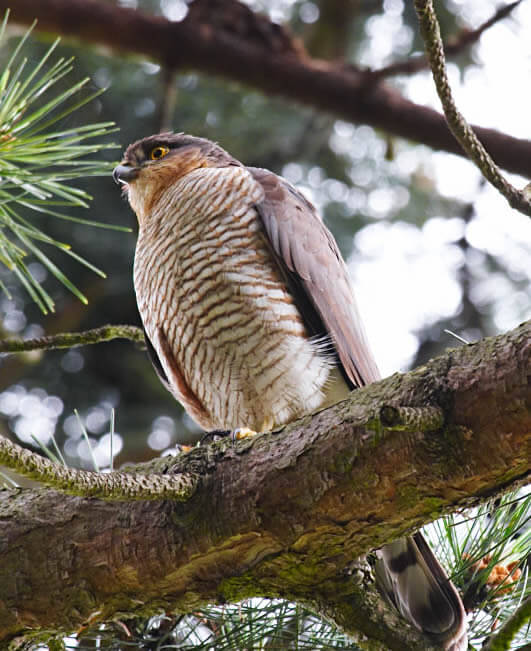
Breeding birds are protected under UK law. Certain species listed on Schedule 1 of the Wildlife and Countryside Act 1981 have enhanced protection, including species such as barn owl (Tyto alba). If your development could potentially affect breeding birds, then you may require a bird survey to support your planning application.
A bird survey should be carried out where a development presents a risk of disturbing nesting birds, damaging their nests, disturbing important feeding and roosting sites, where there is potentially significant loss or damage to bird habitats, or the development site has direct connectivity to a protected area for which birds are either a qualifying interest (SPA) or a notified interest (SSSI).
Bird survey methods will vary depending on the nature and scale of the development and the species likely to occur but should be done by people with the appropriate experience. For small developments where only common bird species are likely to be affected, the survey could just be a simple nesting bird check of the development site and timing the works to make sure no bird nests are at risk of being damaged or disturbed (such as small residential developments).
Larger developments, and particularly those requiring an Environmental Impact Assessment (EIA), typically need more extensive surveys; potentially covering a wide range of different habitats and species and requiring the application of a variety of survey methods.
Our experienced ornithologists can conduct breeding bird surveys and wintering bird surveys, and also advise on the best course of action if breeding birds are found. We are able to conduct bird surveys following a variety of accepted methods and for a number of purposes, such as:
- Breeding bird surveys and monitoring
- Pre-construction nesting bird surveys
- Vantage point surveys
- Breeding raptor surveys
- Black grouse lek surveys
- Wintering bird surveys
- Monitoring of Schedule 1 species
Our ornithologists have experience from a range of projects from monitoring raptors on large wind farm developments, to checking nests in small-scale barn conversions.
Contact us today to discuss your project needs!
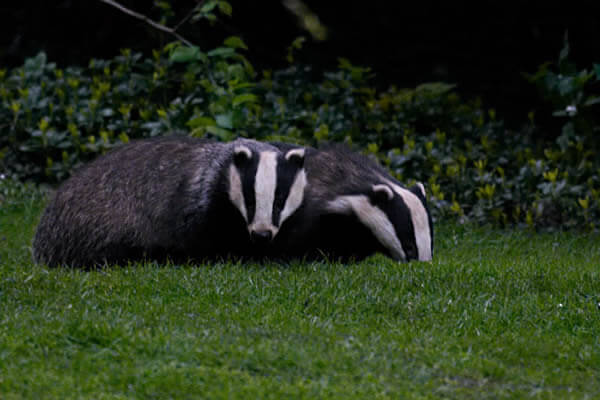
Badgers are protected under UK law. If your development could potentially affect badgers, then you will likely be asked for a badger survey to support your planning application.
Badgers (Meles meles) are a familiar part or Scotland’s countryside, and can be found in many habitats, though they favour woodland or scrub for sett building (the burrows in which they live).
A survey to identify whether badgers are present may be needed where there is suitable habitat. The best time of year to record badgers is in the spring or autumn when the vegetation is low enough to see their tracks.
Our experienced ecologists have many years of conducting badger surveys, and where applicable can give advice on avoidance or mitigation measures that will ensure the welfare of these iconic animals during your development.
We also provide Ecological Clerk of Works services! Contact us today to find out more.
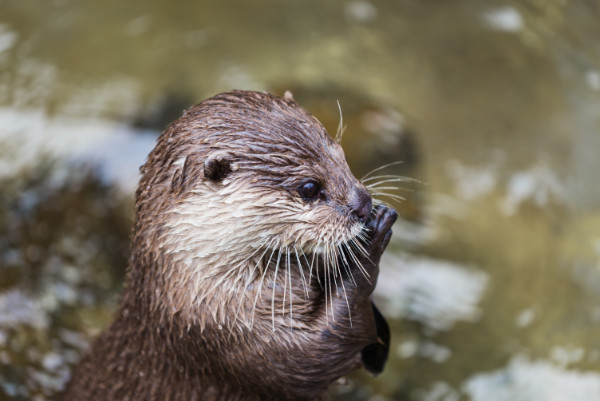
Otters are a European Protected Species, also protected under UK law. If your development could potentially affect otters, then you will likely be asked for an otter survey to support your planning application.
Otter Survey
Otters (Lutra lutra) have made a remarkable comeback and are now found on all Scotland’s rivers as well as the coast.
Otter surveys are usually required where suitable freshwater or coastal habitat is identified within 200m of a development. The initial survey involves surveying all suitable habitat within 200m for field signs of otter.
Camera Monitoring for Otter
If the initial survey identifies a potential otter shelter, a licensed surveyor may use a camera trap to identify if otters are using the shelter or not. If an otter shelter is located and it may be disturbed or destroyed for development, a licence will be required.
Otter Mitigation, Compensation and Licensing
If an otter shelter may be disturbed or destroyed as a result of your project, a licence will be required. A licence cannot be obtained from NatureScot until planning consent has been granted. It should be noted that a licence is not automatically granted, and each application is decided on a strict set of criteria known as the ‘three tests’.
We can prepare, apply, and deal with all aspects of the licence process. Additionally, we provide Ecological Clerk of Works services!
Mitigation and Compensation
We have worked on a number of development projects close to rivers and streams, including hydroelectric schemes, and we are well-placed to provide advice that ensures our clients meet their legal obligations, provide adequate mitigation and compensation measures, to ensure the continued success of the otter.
Contact us today to discuss your project needs!
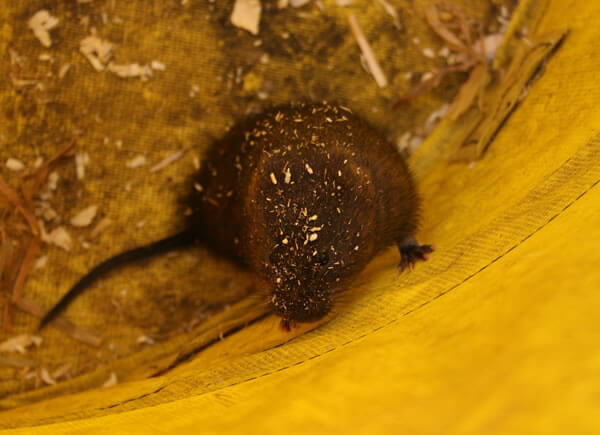
Water voles are protected under UK law. If your development could potentially affect water voles, then you will require a water vole survey to support your planning application.
Water voles (Arvicola amphibius) have suffered big declines as a result of habitat loss and predation from introduced predators such as mink.
Prior to the reintroduction of the beaver to Scotland, the water vole was our largest rodent, and its usual habitat is along the banks of rivers and canals, where it sometimes signals its presence with a distinctive “plop” as it dives underwater and out of sight. However, water voles were recently discovered in Glasgow living away from water and since then large populations have been recorded in the east end of the city living in long grassland in parks, road verges, gardens and derelict land (brownfield). These terrestrial water voles are termed fossorial water voles which means adapted for digging and they spend more time underground in grassland habitats.
We have extensive experience of conducting water vole surveys, along with extensive experience surveying for fossorial water vole, including translocating. With many years of experience of working in the Scottish heartlands for water voles, we know the signs and habitats for water vole well, and we can provide advice on suitable avoidance and mitigation measures.
Wild Surveys ecologists are also able to show contractors the best ways of avoiding disturbing or accidentally capturing small mammals during construction activity through our Ecological Clerk of Works service. Contact us today to discuss your project needs!
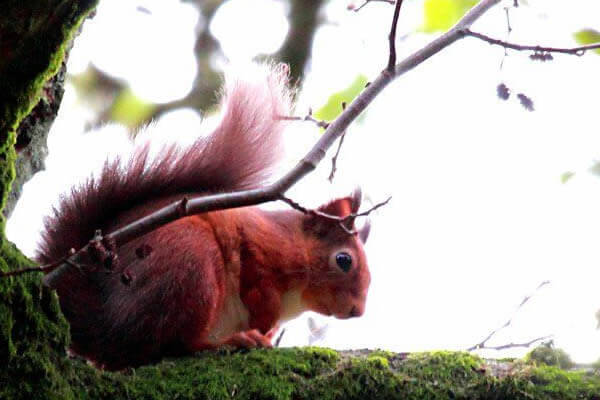
Red squirrels are protected under UK law. If your development could potentially affect red squirrels, then you will likely be asked for a red squirrel survey to support your planning application.
Scotland is one of the last places to see red squirrels (Sciurus vulgaris) in the British Isles, and they have declined drastically due to the introduction of their relative from over the pond, the grey squirrel (S. carolinensis).
Our surveyors are qualified tree climbers who are able to carry out tree surveys to determine if dreys are present as well as carrying out surveys to determine if dreys are in use. We are also able to apply for licenses as and when required.
Additionally, we provide Ecological Clerk of Works services during construction works. Contact us today to discuss your project needs!
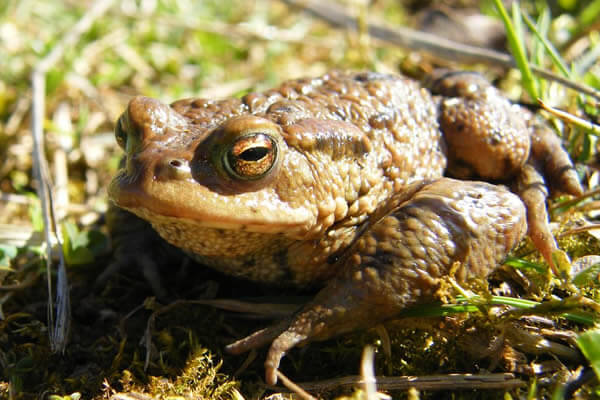
Great crested newts, and their more isolated friends the natterjack toad, are European Protected Species, also protected under UK law. If your development could potentially affect either species, then you will require a survey to support your planning application.
A tiny dragon of ponds, the great crested newt (Triturus cristatus) is an impressive amphibian that is afforded a high degree of protection due to it being a rare sight across Europe. The natterjack toad (Epidalea calamita) is our rarest amphibian and in Scotland it is restricted to the south coast of Dumfries and Galloway.
Surveys for great crested newts are carried out by licensed ecologists. A preliminary Habitat Suitability Index is first carried out on all ponds within 500m of a development site, to identify ponds which may require further survey, along with an assessment of terrestrial habitat suitability within the site. Further surveys can only be carried out between mid-April and mid-June – a relatively short survey window not to be missed!
Our licensed ecologists are experienced in a range of survey methods, and advice on survey requirements and the best course of action should great crested newts be found.
If you are lucky enough to have natterjack toads, we can also provide advice and link in to specialist organisations such as the Amphibian and Reptile Conservation Trust.
Additionally, we provide Ecological Clerk of Works services during construction works. Contact us today to discuss your project needs!

Reptiles are protected under UK law. If your development could potentially affect reptiles, then you may be asked for a reptile survey to support your planning application.
In Scotland all of our native reptiles are protected, including adders (Vipera berus), slow-worms (Anguis fragilis), common lizards (Zootoca vivipara) and all species of marine turtle. Most developers do not find turtles to be an issue, as these tropical travelers are just visitors to our seas.
Reptile surveys involve two techniques; a visual search of a site looking for habitat features, signs of reptiles and a more involved survey using artificial refugia. All of our surveyors are experienced in identifying habitat that may support reptiles, mitigation and compensation that may be required, and can provide guidance on what to do in the event one of these species are encountered during works.
Additionally, we provide Ecological Clerk of Works services during construction works. Contact us today to discuss your project needs!
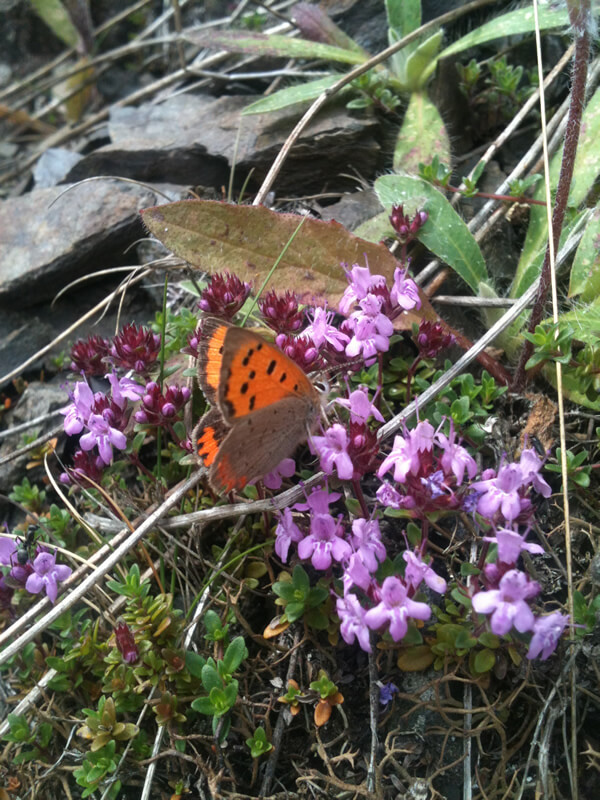
There are a number of other protected species in Scotland that may require developers to conduct surveys and provide mitigation should your proposals potentially affect one of these species.
Our ecologists come from a range of backgrounds and have specialisms and training to allow us to confidently identify sights and signs of Scotland’s wildlife. Other species we survey for include:
• Wild Cat (Felis silvestris)
• Pine Marten (Martes martes)
• Protected Freshwater Fish Species
• Butterflies and Invertebrates
Contact us today to discuss your project needs!
Protected Species Surveys
Some animals have special protection from disturbance and damage, and protection of their breeding and resting sites.
The presence, or potential presence, of any protected species is a material consideration in planning application decisions.
This means that Scottish Planning Policy requires that the presence (or potential presence) of legally protected species is factored into the planning and design of development proposals, and that any potential impacts on protected species are fully considered prior to the determination of planning applications.
The aim with all protected species is to follow the mitigation hierarchy: avoid impacts, minimise impacts and then lastly compensate for impacts, restore or offset (as a last resort).
How We Can help
We have over 40 years’ combined experience of carrying out protected species surveys in Scotland. This means we have a strong understanding of the legal framework, along with national and local policies. We know the types of surveys that you need and when you need to do them, helping avoid potential delays to your project.
We provide a comprehensive ecological service ranging from simple surveys to detailed impact assessments. Below is a sample of the range of protected species surveys we offer.
We’d love to hear about your project. Contact us today for more information on how we can support your project needs!
Bats
Bats are a European Protected Species, also protected under UK law. If your development could potentially affect roosting, hibernating or foraging bats, then you will be asked for a bat survey to support your planning application.
Stage 1 – Preliminary Roost Assessment
The first stage of a bat survey is to determine the suitability of your survey site to support bats following best practice methodology. During this initial survey all structures are inspected closely (inside and out) and any trees are inspected externally from the ground. Additionally, the habitats within the site and adjacent are evaluated for their suitability to support foraging or commuting bats.
The survey involves the use of a range of equipment such as ladders, torches and an endoscope where necessary to identify any features that may be suitable for bats to roost and if any field signs (or any bats) are present. We have multiple licensed surveyors on our team with extensive survey experience.
This survey provides valuable information to determine if further surveys are required.
Contact us today to discuss your project needs!
Stage 2 – Further Surveys
Bat Activity Surveys (BAS)
Your site has suitability for roosting bats, what’s next?
The next stage is an activity survey. This may consist of one or more emergence surveys, (also called dusk surveys) carried out at dusk (30 minutes before dusk until around 60 minutes or so after) to identify the presence or absence of roosting bats.
It might also consist of a dawn re-entry survey (90 minutes before dawn). During this survey distinctive bat behaviour such as swarming is looked for.
Both survey types require surveyors to be in fixed positions around the structure so that every aspect can be observed and detectors are used to listen for bats echolocating (they record too so we can double check when back in the office). In addition, our surveyors often use infrared or thermal imaging cameras in addition to hand-held bat detectors.
Depending on the suitability of your structure(s), your activity survey should consist of one to three surveys between May and August, with at least two weeks between surveys.
Hibernation Surveys
During the winter months’ emergence and re-entry surveys cannot be carried out as this is considered to be a sub-optimal survey period as bats may be inactive or hibernating. It is dangerous for bats to be disturbed while hibernating.
Structures can still be assessed for their suitability and whether any field signs are present. If works are not planned for a site until the spring and summer, then a full survey including emergence and re-entry surveys will usually be required.
Tree Surveys for Bats
Are your trees suitable for roosting bats?
If the PRA identifies that your trees have suitability for roosting bats, trees can be climbed and inspected at any time of the year. This means features that are visible from the ground can be inspected. If trees can’t be inspected, an activity survey may be required instead.
All trees should be assessed for their potential to support bats; as even unoccupied bat roosts are protected by law. This includes trees to be felled or in need of tree surgery but also trees that may be disturbed by noise or lighting indirectly as a result of development.
Our experienced team includes qualified and experienced tree climbers, all of whom have a bat licence. Contact us today to discuss your project needs!
Licensing, Mitigation and Compensation
Applying for a Bat Licence
If disturbance or destruction of a bat roost is unavoidable, a licence to disturb or destroy a bat roost will be required. A licence cannot be obtained from NatureScot until planning consent has been granted. It should be noted that a licence is not automatically granted and each application is decided on a strict set of criteria known as the ‘three tests’.
We can prepare, apply, and deal with all aspects of the licence process.
Mitigation and Compensation
As compensation for the loss of a bat roost, bat boxes or in-building features designed to accommodate bats, will be required to satisfy licence conditions, our experienced staff can best advise the location, design type, and number required, as well as other forms of mitigation which may be appropriate to your project.
As part of your Biodiversity Enhancement Strategy you may decide to include opportunities for roosting bats above and beyond measures required for mitigation. Contact us today to discuss your project needs!
Hand Strip
If a bat roost is present and a licence has been granted, proposed works will require to be carried out in line with the licence conditions and Bat Protection Plan. A licensed bat worker will be required to be present during any work carried out on or near a bat roost to be disturbed or destroyed. The identified area should be slowly stripped by hand by the contractor until the licensed bat worker is satisfied there is no longer a risk to any bats and that no bats are present.
We have licensed full time members of staff who have experience in dealing with licence conditions and hand-strips. Contact us today to discuss your project needs!
Bats in my House
Bats have been known to enter properties, this usually happens when the bat has been chasing prey through an open window, if you discover a bat in your property open the window turn off any lights and close the door. If the bat is active, it will find its own way out. Advice to anyone who finds a sick or injured bat can be given by the three organisations listed below.
Contact Numbers
If you have a grounded bat in your property then you should call either the Bat Conservation Trust Bat Helpline (0345 1300 228) or the SSPCA Animal Helpline (03000 999 999) for advice on how to best handle and remove the bat.
Bats in Houses telephone NatureScot: 01463 725 165
Email: batsinhouses@nature.scot
Hessilhead Wildlife Centre 01505 502415
Birds
Breeding birds are protected under UK law. Certain species listed on Schedule 1 of the Wildlife and Countryside Act 1981 have enhanced protection, including species such as barn owl (Tyto alba). If your development could potentially affect breeding birds, then you may require a bird survey to support your planning application.
A bird survey should be carried out where a development presents a risk of disturbing nesting birds, damaging their nests, disturbing important feeding and roosting sites, where there is potentially significant loss or damage to bird habitats, or the development site has direct connectivity to a protected area for which birds are either a qualifying interest (SPA) or a notified interest (SSSI).
Bird survey methods will vary depending on the nature and scale of the development and the species likely to occur but should be done by people with the appropriate experience. For small developments where only common bird species are likely to be affected, the survey could just be a simple nesting bird check of the development site and timing the works to make sure no bird nests are at risk of being damaged or disturbed (such as small residential developments).
Larger developments, and particularly those requiring an Environmental Impact Assessment (EIA), typically need more extensive surveys; potentially covering a wide range of different habitats and species and requiring the application of a variety of survey methods.
Our experienced ornithologists can conduct breeding bird surveys and wintering bird surveys, and also advise on the best course of action if breeding birds are found. We are able to conduct bird surveys following a variety of accepted methods and for a number of purposes, such as:
- Breeding bird surveys and monitoring
- Pre-construction nesting bird surveys
- Vantage point surveys
- Breeding raptor surveys
- Black grouse lek surveys
- Wintering bird surveys
- Monitoring of Schedule 1 species
Our ornithologists have experience from a range of projects from monitoring raptors on large wind farm developments, to checking nests in small-scale barn conversions.
Contact us today to discuss your project needs!
Badgers
Badgers are protected under UK law. If your development could potentially affect badgers, then you will likely be asked for a badger survey to support your planning application.
Badgers (Meles meles) are a familiar part or Scotland’s countryside, and can be found in many habitats, though they favour woodland or scrub for sett building (the burrows in which they live).
A survey to identify whether badgers are present may be needed where there is suitable habitat. The best time of year to record badgers is in the spring or autumn when the vegetation is low enough to see their tracks.
Our experienced ecologists have many years of conducting badger surveys, and where applicable can give advice on avoidance or mitigation measures that will ensure the welfare of these iconic animals during your development.
We also provide Ecological Clerk of Works services! Contact us today to find out more.
Otters
Otters are a European Protected Species, also protected under UK law. If your development could potentially affect otters, then you will likely be asked for an otter survey to support your planning application.
Otter Survey
Otters (Lutra lutra) have made a remarkable comeback and are now found on all Scotland’s rivers as well as the coast.
Otter surveys are usually required where suitable freshwater or coastal habitat is identified within 200m of a development. The initial survey involves surveying all suitable habitat within 200m for field signs of otter.
Camera Monitoring for Otter
If the initial survey identifies a potential otter shelter, a licensed surveyor may use a camera trap to identify if otters are using the shelter or not. If an otter shelter is located and it may be disturbed or destroyed for development, a licence will be required.
Otter Mitigation, Compensation and Licensing
If an otter shelter may be disturbed or destroyed as a result of your project, a licence will be required. A licence cannot be obtained from NatureScot until planning consent has been granted. It should be noted that a licence is not automatically granted, and each application is decided on a strict set of criteria known as the ‘three tests’.
We can prepare, apply, and deal with all aspects of the licence process. Additionally, we provide Ecological Clerk of Works services!
Mitigation and Compensation
We have worked on a number of development projects close to rivers and streams, including hydroelectric schemes, and we are well-placed to provide advice that ensures our clients meet their legal obligations, provide adequate mitigation and compensation measures, to ensure the continued success of the otter.
Contact us today to discuss your project needs!
Water Voles
Water voles are protected under UK law. If your development could potentially affect water voles, then you will require a water vole survey to support your planning application.
Water voles (Arvicola amphibius) have suffered big declines as a result of habitat loss and predation from introduced predators such as mink.
Prior to the reintroduction of the beaver to Scotland, the water vole was our largest rodent, and its usual habitat is along the banks of rivers and canals, where it sometimes signals its presence with a distinctive “plop” as it dives underwater and out of sight. However, water voles were recently discovered in Glasgow living away from water and since then large populations have been recorded in the east end of the city living in long grassland in parks, road verges, gardens and derelict land (brownfield). These terrestrial water voles are termed fossorial water voles which means adapted for digging and they spend more time underground in grassland habitats.
We have extensive experience of conducting water vole surveys, along with extensive experience surveying for fossorial water vole, including translocating. With many years of experience of working in the Scottish heartlands for water voles, we know the signs and habitats for water vole well, and we can provide advice on suitable avoidance and mitigation measures.
Wild Surveys ecologists are also able to show contractors the best ways of avoiding disturbing or accidentally capturing small mammals during construction activity through our Ecological Clerk of Works service. Contact us today to discuss your project needs!
Red Squirrel
Red squirrels are protected under UK law. If your development could potentially affect red squirrels, then you will likely be asked for a red squirrel survey to support your planning application.
Scotland is one of the last places to see red squirrels (Sciurus vulgaris) in the British Isles, and they have declined drastically due to the introduction of their relative from over the pond, the grey squirrel (S. carolinensis).
Our surveyors are qualified tree climbers who are able to carry out tree surveys to determine if dreys are present as well as carrying out surveys to determine if dreys are in use. We are also able to apply for licenses as and when required.
Additionally, we provide Ecological Clerk of Works services during construction works. Contact us today to discuss your project needs!
Great Crested Newts & Natterjack Toad
Great crested newts, and their more isolated friends the natterjack toad, are European Protected Species, also protected under UK law. If your development could potentially affect either species, then you will require a survey to support your planning application.
A tiny dragon of ponds, the great crested newt (Triturus cristatus) is an impressive amphibian that is afforded a high degree of protection due to it being a rare sight across Europe. The natterjack toad (Epidalea calamita) is our rarest amphibian and in Scotland it is restricted to the south coast of Dumfries and Galloway.
Surveys for great crested newts are carried out by licensed ecologists. A preliminary Habitat Suitability Index is first carried out on all ponds within 500m of a development site, to identify ponds which may require further survey, along with an assessment of terrestrial habitat suitability within the site. Further surveys can only be carried out between mid-April and mid-June – a relatively short survey window not to be missed!
Our licensed ecologists are experienced in a range of survey methods, and advice on survey requirements and the best course of action should great crested newts be found.
If you are lucky enough to have natterjack toads, we can also provide advice and link in to specialist organisations such as the Amphibian and Reptile Conservation Trust.
Additionally, we provide Ecological Clerk of Works services during construction works. Contact us today to discuss your project needs!
Reptiles
Reptiles are protected under UK law. If your development could potentially affect reptiles, then you may be asked for a reptile survey to support your planning application.
In Scotland all of our native reptiles are protected, including adders (Vipera berus), slow-worms (Anguis fragilis), common lizards (Zootoca vivipara) and all species of marine turtle. Most developers do not find turtles to be an issue, as these tropical travelers are just visitors to our seas.
Reptile surveys involve two techniques; a visual search of a site looking for habitat features, signs of reptiles and a more involved survey using artificial refugia. All of our surveyors are experienced in identifying habitat that may support reptiles, mitigation and compensation that may be required, and can provide guidance on what to do in the event one of these species are encountered during works.
Additionally, we provide Ecological Clerk of Works services during construction works. Contact us today to discuss your project needs!
Other Species
There are a number of other protected species in Scotland that may require developers to conduct surveys and provide mitigation should your proposals potentially affect one of these species.
Our ecologists come from a range of backgrounds and have specialisms and training to allow us to confidently identify sights and signs of Scotland’s wildlife. Other species we survey for include:
• Wild Cat (Felis silvestris)
• Pine Marten (Martes martes)
• Protected Freshwater Fish Species
• Butterflies and Invertebrates
Contact us today to discuss your project needs!
